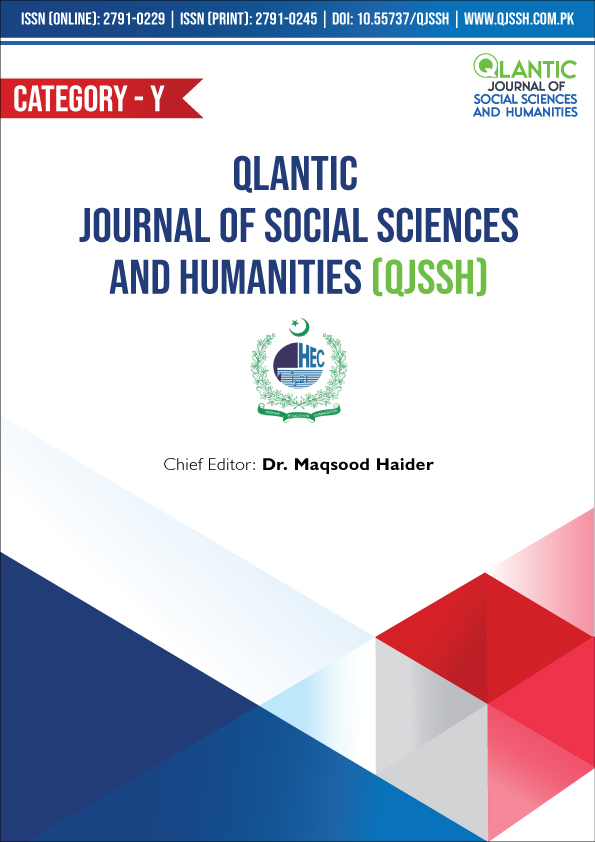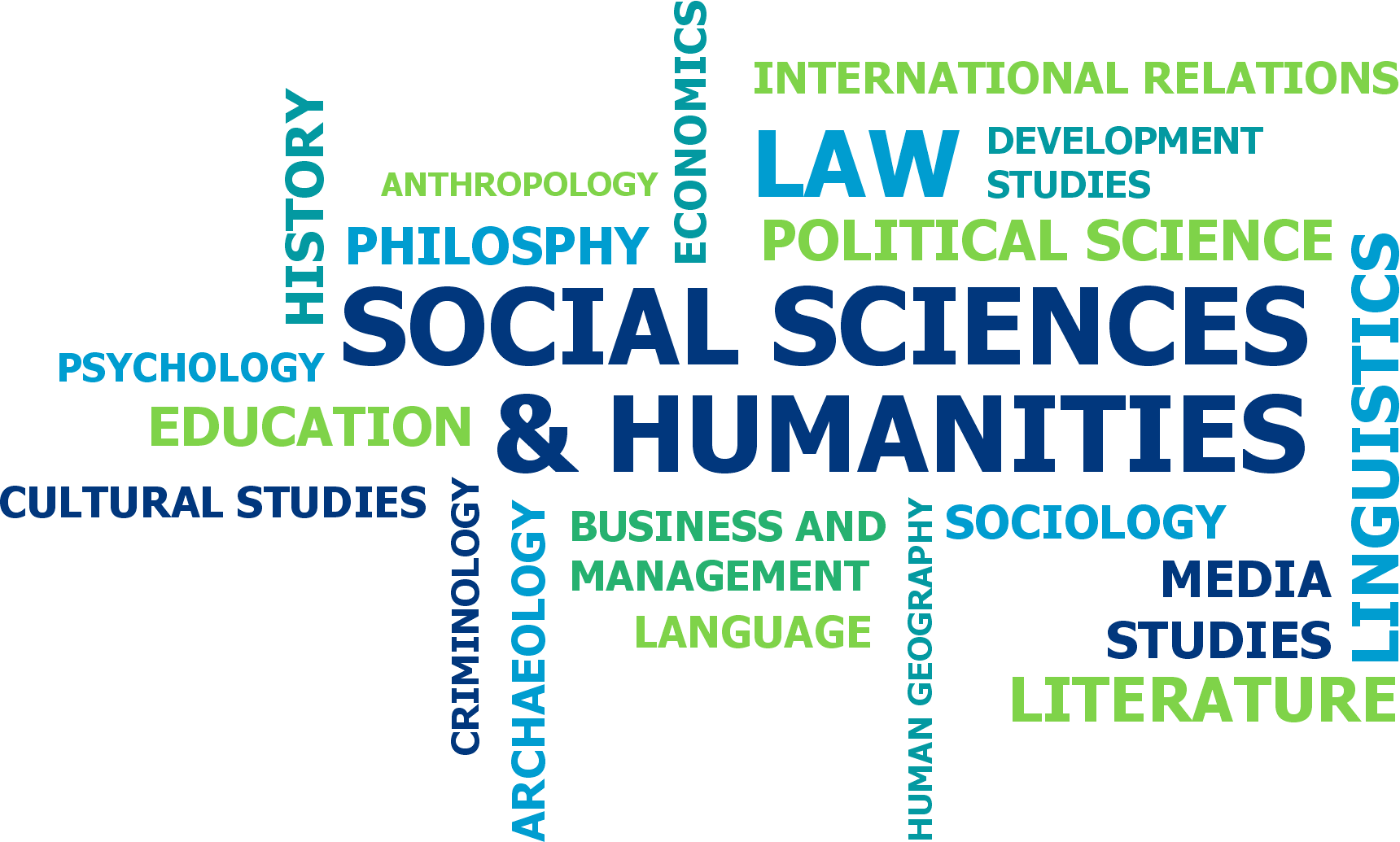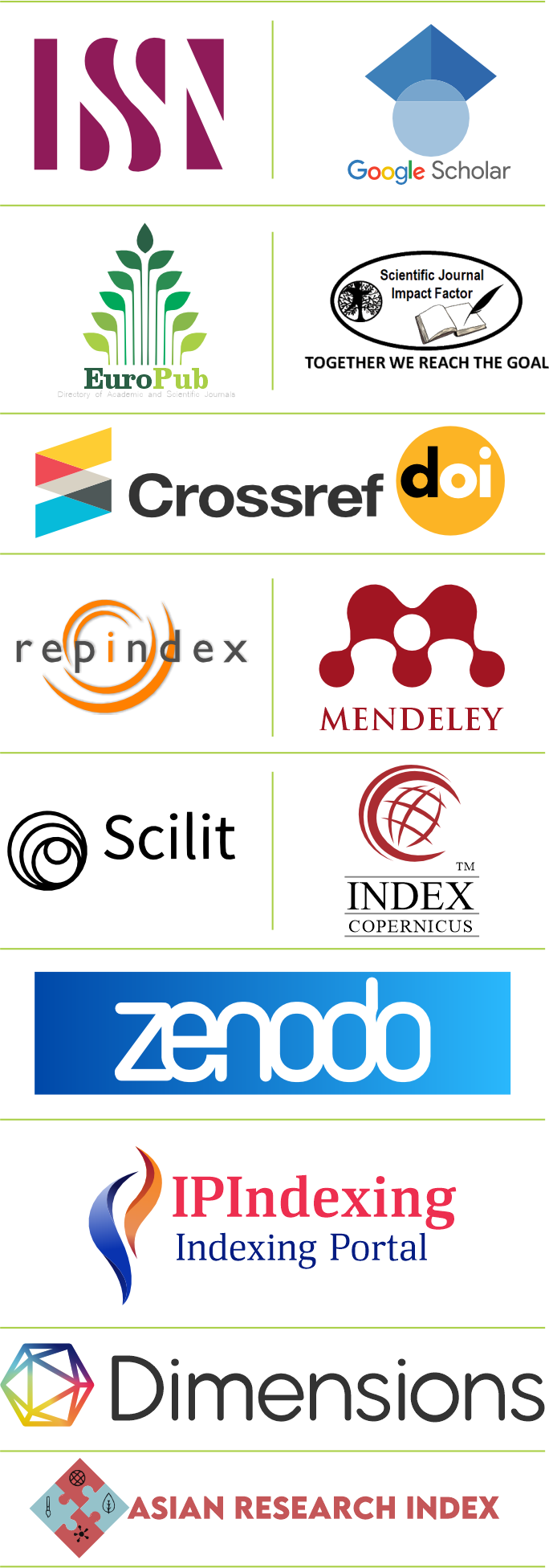A Critical Analysis of Copyright Laws for Regulating the Legal Framework for Artificial Intelligence
DOI:
https://doi.org/10.55737/qjssh.vi-i.25334Keywords:
Intellectual Property Law, Artificial Intelligence, Copyright LawsAbstract
In the 21st century, the emergence of Artificial Intelligence (AI) has reshaped innovation, presenting unique challenges to Intellectual Property Rights (IPR). This burgeoning industry, propelled by researchers’ ingenuity, has the potential to revolutionize various sectors, significantly impacting IPR globally. IPR serves as a safeguard for personal inventions, yet the current framework appears inadequate in addressing the multifaceted aspects of AI. As AI evolves, questions arise about the sufficiency of existing IPR laws in managing the inventive outputs of AI systems. This article explores the intersection of artificial intelligence and intellectual property, focusing on legal structures governing the ownership rights of goods produced by AI systems. The objective is to provide a comprehensive understanding of the intellectual property challenges associated with AI's inventive capabilities. The following are the crucial questions that are raised herein: Who will be the author of the AI generating text, AI itself, the programmer, or the input of the text? Can AI system generation have a risk of copyright infringement? Can Pakistani IPR laws adequately address contemporary issues arising from AI innovation? This article thus identifies gaps in the current legal landscape and proposes policy recommendations to address these challenges. This contributes to the discourse on the evolving relationship between AI and IPR, offering insights to inform future legal frameworks in this rapidly advancing field.
References
Abbott, R. B. (2016). I think, therefore, I invent: Creative computers and the future of patent law. Boston College Law Review, 57(4). https://ssrn.com/abstract=2727884
Abbott, R. B., & Rothman, E. (2022). Disrupting creativity: Copyright law in the age of generative artificial intelligence. Florida Law Review, 75(6), 2023. https://ssrn.com/abstract=4185327
Anyoha, R. (2017, August 28). The history of artificial intelligence. Science in the News.
Bagga, S., & Piper. (2020). Measuring the effects of bias in training data for literary classification. Proceedings of the 4th Joint SIGHUM Workshop on Computational Linguistics for Cultural Heritage, Social Sciences, Humanities and Literature, 74–84. https://aclanthology.org/2020.latechclfl-1.9.pdf
Baio, A. (2022, September 30). AI data laundering: How academic and nonprofit researchers shield tech companies from accountability. Waxy Blog. https://waxy.org/2022/09/ai-data-laundering-how-academic-and-nonprofit-researchers-shield-tech-companies-from-accountability/
Bear Child Chasing Balloon (Second Instance Judgment), Beijing Intellectual Property Court, (2017) Jing 73 Min Zhong No. 797 Civil Judgment, IPR Daily, April 2, 2020,
Bently, L.(2018). Intellectual property law (5th ed.). Oxford University Press.
Bleistein v. Donaldson Lithographing Co., 188 U.S. 239 (1903).
Bonadio, E., Dinev, P., & McDonagh, L. (2022). Can artificial intelligence infringe copyright? Some reflections. In R. Abbott (Ed.), Research handbook on intellectual property and artificial intelligence (ISBN 9781800881891). Edward Elgar. https://ssrn.com/abstract=4315222
Brittain, B. (2023, March 16). U.S. Copyright Office says some AI-assisted works may be copyrighted. Reuters. https://www.reuters.com/world/us/us-copyright-office-says-some-ai-assisted-works-may-be-copyrighted-2023-03-15/
Bruce, E. B. (2024). “Generative AI and IP Under US Law” (Marquette Law School Legal Studies Paper No. 24-09, forthcoming in The Cambridge Handbook of Generative AI and the Law, ed. Ryan Calo, Martin Ebers, Christina Poncibo, and Mimi Zou, 2025), https://ssrn.com/abstract=5024667
Callison-Burch, C. (2024). Understanding generative artificial intelligence and its relationship to copyright. Written testimony before the U.S. House of Representatives Judiciary Committee, Subcommittee on Courts, Intellectual Property, and the Internet, Hearing on Artificial Intelligence and Intellectual Property: Part I – Interoperability of AI and Copyright Law. https://judiciary.house.gov/sites/evo-subsites/republicans-judiciary.house.gov/files/evo-media-document/callison-burch-testimony-sm.pdf.
Carruth v. Easterling, 247 Miss. 364, 150 So. 2d 852 (1963).
Cifrodelli, G. (2021, December 20). Patent system and artificial intelligence: Towards a new concept of inventorship? Zenodo. https://doi.org/10.5281/zenodo.5720649.
Coldewey, D. (2016, September 9). Google’s WaveNet uses neural nets to generate eerily convincing speech and music. TechCrunch. https://techcrunch.com/2016/09/09/googles-wavenet-uses-neural-nets-to-generate-eerily-convincing-speech-and-music
Community for Creative Non-Violence v. Reid, 490 U.S. 730 (1989).
Copeland, B. J. (2024, December 19). Artificial intelligence (AI). Encyclopedia Britannica. https://www.britannica.com/technology/artificial-intelligence.
Copyright Act 1994 (New Zealand), Section 5 (2) (a).
Copyright, Designs and Patents Act 1988, c. 48, § 16(1).
Copyright, Designs and Patents Act 1988, c. 48, § 19.
De Leon, E. A. A. (2020, September 16). Artificial intelligence in the military and Pakistan’s IP. Asia IP Law. https://www.asiaiplaw.com/section/news-analysis/artificial-intelligence-in-the-military-and-pakistans
Designer Guild Ltd v. Russell Williams (Textiles) Ltd, [2001] FSR 113.
Diaz, M. (2018, April 17). Artificial intelligence and copyright. Lexology. https://www.lexology.com/library/detail.aspx?g=ab3340fa-57e5-4145-afe9-110b088c9e36.
Edwards, B. (2024). “AI-Generated Comic Artwork Loses US Copyright Protection,” Ars Technica, February 2023, https://arstechnica.com/information-technology/2023/02/us-copyright-office-withdraws-copyright-for-ai-generated-comic-artwork/.
Ekhator, E. G. (2023, April 1). An examination of copyright issues associated with autonomous AI machines. https://ssrn.com/abstract=4416232
Ellingrud, K., Sanghvi, S., Dandona, G. S., Madgavkar, A., Chui, M., White, O., & Hasebe, P. (2023, July 26). Generative AI and the future of work in America. McKinsey Global Institute https://www.mckinsey.com/featured-insights/generative-ai-and-the-future-of-work
Eva-Maria Painer v. Standard VerlagsGmbH and Others, CJEU, December 1, 2011, Case C-145/10.
Feist Publications, Inc. v. Rural Telephone Service Co., Inc., 499 U.S. 340 (1991).
Francis Day & Hunter v. Bron, [1963] Ch 587.
Franklin v. Giddins, [1978] Qd R 72 (QSC, Dunn J, Oct 12, 1977).
Ginsburg, J. C. (2017). The Court of Justice of the European Union creates an EU law of liability for facilitation of copyright infringement: Observations on Brein v. Filmspeler [C-527/15] (2017) and Brein v. Ziggo [C-610/15] (2017). Auteurs et Médias, 2016(5-6), 401. Columbia Law and Economics Working Paper No. 572, Columbia Public Law & Legal Theory Paper 14-557. https://ssrn.com/abstract=3024302
Gregory, J. (2017, July 6). Press Association wins Google grant to run news service written by computers. The Guardian. https://www.theguardian.com/technology/2017/jul/06/press-association-wins-google-grant-to-run-news-service-written-by-computers.
Guadamus, A. (2017). Artificial intelligence and copyright. WIPO Magazine. https://www.wipo.int/wipo_magazine/en/2017/05/article_0003.html.
Hill, A. M. (1989). Work for hire definition in the Copyright Act of 1976: Conflict over specially ordered or commissioned works. Cornell Law Review, 74(3), 559. http://scholarship.law.cornell.edu/clr/vol74/iss3/5.
Horror Inc. v. Miller, 15 F.4th 232 (2d Cir. 2021).
Hristov, K. (2017). Artificial intelligence and the copyright dilemma. IDEA: The IP Law Review, 57(3). https://ssrn.com/abstract=2976428.
Huang, W., & Hayat, A. (2019). Impact of artificial intelligence in enterprises' HR performance in Pakistan: A comparison study with Australia. Global Journal of Management and Business Research, 19(A15), 53-58. https://journalofbusiness.org/index.php/GJMBR/article/view/3074.
Hugenholtz, P. B., & Quintais, J. P. (2021). Copyright and artificial creation: Does EU copyright law protect AI-assisted output? IIC, 52, 1190–1216. https://doi.org/10.1007/s40319-021-01115-0.
Hughes, J. (1988). The philosophy of intellectual property. Georgetown Law Journal, 77(2), 287. https://justinhughes.net/docs/a-ip01.pdf.
IIPRD, (2024). “Conundrum of Copyright over the Content Created By AI,”, https://www.iiprd.com/conundrum-of-copyright-over-the-content-created-by-ai/
Infopaq International A/S v. Danske Dagblades Forening (Infopaq II), C-302/10, 17 January 2012, ECLI:EU:C:2012:16.
Intellectual Property Office. (2011). Digital opportunity: A review of intellectual property and growth. https://www.gov.uk/government/publications/digital-opportunity-review-of-intellectual-property-and-growth
Intellectual Property Office. (2021, March 23). Artificial intelligence call for views: Copyright and related rights. Gov.uk. https://www.gov.uk/government/consultations/artificial-intelligence-and-intellectual-property-call-for-views/artificial-intelligence-call-for-views-copyright-and-related-rights.
Liebesman, Y. J., & Cromer Young, J. (2020). Litigating against the artificially intelligent infringer. FIU Law Review, 14, 259. https://ecollections.law.fiu.edu/lawreview/vol14/iss2/8
Merrill, T. W. (2009). Accession and original ownership. Journal of Legal Analysis, 1(2), 459–510. https://doi.org/10.1093/jla/1.2.459.
Michael A. C. (2012). “Copyright and Innovation: The Untold Story,” Wisconsin Law Review (2012): 891, October 24, https://ssrn.com/abstract=2099876
Mitchell v. BBC, [2011] EWPCC 42.
Moerland, A. (2022, May 20). Artificial intelligence and intellectual property law. https://ssrn.com/abstract=4203360
Murtiza, G., & Muhammad, G. (2019). The implementation of intellectual property laws in Pakistan: Impediments and suggestions for solutions. Journal of Pakistan Vision, 20(1), 4. https://www.prdb.pk/article/the-implementation-of-intellectual-property-laws-in-pakistan-6120
Naruto v. Slater, (9th Cir. 2018).
Noshab, F. (2001). Intellectual property rights: Issues and implications for Pakistan. Strategic Studies, 21(2), 61–76. http://www.jstor.org/stable/45242255
Ogwuche, P. (2022, October 16). Artificial intelligence: The legal implications of intellectual property rights for AI-generated inventions. SSRN. https://ssrn.com/abstract=4589323
Olewitz, C. (2016, March 23). A Japanese AI program just wrote a novel, and it almost won a literary prize. Digital Trends. https://www.digitaltrends.com/cool-tech/japanese-ai-writes-novel-passes-first-round-nationanl-literary-prize.
Peukert, A. (2024). Copyright in the Artificial Intelligence Act – A primer. GRUR International, 73(6). https://ssrn.com/abstract=4771976
Peukert, A. (2024). Regulating IP exclusion/inclusion on a global scale: The example of copyright vs. AI training. Research Paper of the Faculty of Law of Goethe University Frankfurt/M., no. 3/2024. Goethe University Frankfurt. f
Radford, J. Wu, R. Child, D. Luan, D. Amodei, & Sutskever, I. (2018). “Language Models Are Unsupervised Multitask Learners,” OpenAI Research Paper, 2018, https://cdn.openai.com/better-language-models/language_models_are_unsupervised_multitask_learners.pdf.
Records, A&M Inc. v. Napster, Inc., 239 F.3d 1004, 1029 (9th Cir. 2001).
Renaud, M. T., & McConihe, M. (2019, January 23). Key strategies for obtaining patents under the EPO's new AI guidelines. The National Law Review. https://www.natlawreview.com/article/epos-new-ai-guidelines-steps-to-obtaining-patent.
Sandiumenge, I. (2023, August 4). Copyright implications of the use of generative AI. https://ssrn.com/abstract=4531912
Second IP5 NET/AI Task Force Meeting Summary. (2021, March 3-5). Virtual format. https://link.epo.org/ip5/2nd+IP5+NET_AI+task+force+meeting+-+summary_12032021.pdf.
Sheeran & Ors v. Chokri & Ors, [2022] EWHC 827 (Ch).
Temple Island Collections Ltd v. New English Teas Ltd & Another (No. 2), [2012] EWPCC 1.
Thaler v. Perlmutter, No. 1:22-cv-01564 (D.D.C. Aug. 18, 2023).
The Investopedia Team. (2024, April 9). What is artificial intelligence (AI)? Investopedia. https://www.investopedia.com/terms/a/artificial-intelligence-ai.asp.
TuneIn Inc v. Warner Music UK Ltd & Anor, [2021] EWCA Civ 441.
UK Copyright, Design, and Patent Act (1988).
University of London Press Ltd v. University Tutorial Press Ltd, [1916] 2 Ch 601.
Urantia Foundation v. Maaherra, 114 F.3d 955 (9th Cir. 1997), cert. denied, 522 U.S. 810 (1997).
Wilson, G. P. (1957). Jurisprudence and the discussion of ownership. The Cambridge Law Journal, 15(2), 216–229. http://www.jstor.org/stable/4504463.
WIPO Secretariat. (2020, May 21). WIPO conversation on intellectual property (IP) and artificial intelligence (AI): Second session (Report No. WIPO/IP/AI/2/GE/20/1 REV). World Intellectual Property Organization. https://www.wipo.int/edocs/mdocs/mdocs/en/wipo_ip_ai_2_ge_20/wipo_ip_ai_2_ge_20_1_rev.pdf.
World Intellectual Property Organization (WIPO). (2020). WIPO Conversation on Intellectual Property (IP) and Artificial Intelligence (AI), Second Session: Revised Issues Paper on Intellectual Property Policy and Artificial Intelligence. WIPO/IP/AI/2/GE/20/1 Rev. https://www.wipo.int/edocs/mdocs/mdocs/en/wipo_ip_ai_2_ge_20/wipo_ip_ai_2_ge_20_1_rev.pdf.
World Intellectual Property Organization. (WIPO). (2020, July 9). WIPO's second session of conversation on IP and artificial intelligence ends with outline of next steps (PR/2020/857). https://www.wipo.int/pressroom/en/articles/2020/article_0008.html.
World Intellectual Property Organization. (2016). Understanding copyright and related rights. https://www.wipo.int/edocs/pubdocs/en/wipo_pub_909_2016.pdf.
Yanisky-Ravid, S. (2017). Generating Rembrandt: Artificial intelligence, copyright, and accountability in the 3A era—The human-like authors are already here—A new model. Michigan State Law Review, 659. https://ir.lawnet.fordham.edu/faculty_scholarship/956.
Downloads
Published
Issue
Section
License
Copyright (c) 2025 Shahir Hadi, Talha Ali Butt

This work is licensed under a Creative Commons Attribution-NonCommercial 4.0 International License.





